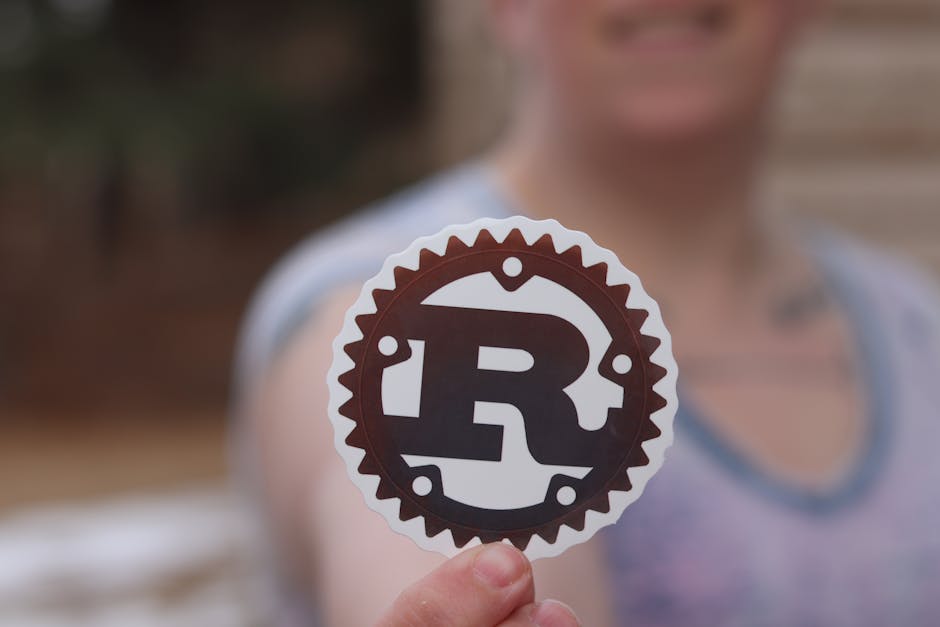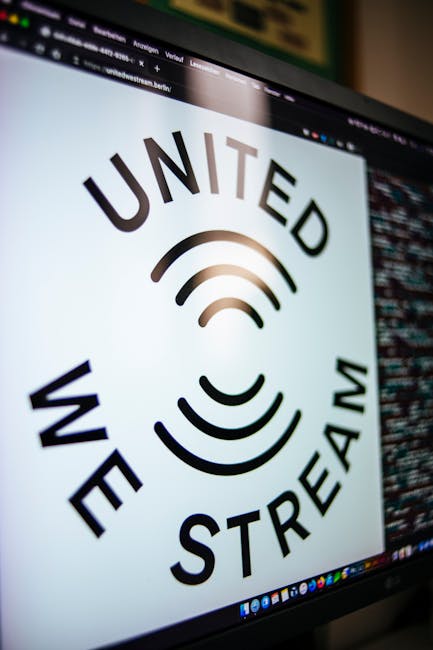
Are you tired of your design/” title=”Law Firm Logo Design”>logo just sitting there, looking pretty? Ready to give it some CSSy pizzazz and bring it to life on your website? Look no further, because we’ve got the scoop on how to convert your logo to CSS code like a pro. Say goodbye to boring static images and hello to dynamic design that will have your website looking slicker than a pair of disco pants. Let’s dive into the world of code and make your logo pop like never before!
Understanding CSS and its benefits for logos
CSS is like the fairy godmother of web design, swooping in to make your logos shine like never before. With its magical powers, CSS allows you to customize every little detail of your logo, from colors to shapes to fonts. Think of it as giving your logo a makeover, but without the uncomfortable chair and harsh lighting.
One of the major benefits of using CSS for logos is its flexibility. Want to change the color of your logo? No problem! Just tweak a few lines of code and voila, you have a brand new look. Need to adjust the size of your logo for different devices? Easy peasy! CSS makes it simple to create responsive logos that look great on any screen.
In addition to flexibility, CSS also helps you keep your logos lightweight and speedy. By using CSS to style your logos instead of relying on images, you can significantly reduce the file size of your website. This means faster load times for your visitors and a better user experience overall. So say goodbye to clunky, image-heavy logos and hello to sleek, CSS-powered designs that pack a punch.
conversion“>Analyzing your logo design for CSS conversion
So you’ve finally got your hands on that snazzy new logo design, and now you’re ready to take it to the next level with some CSS conversion magic. But before you dive in headfirst, let’s take a closer look at your logo and make sure it’s truly ready for the transformation.
First things first, let’s talk about colors. Make sure your logo design uses a limited color palette that can easily be translated into CSS hex values. If your logo has a million different shades and tints, you might want to consider simplifying things a bit. **Just like in real life, less is more when it comes to CSS colors.**
Next up, let’s talk about fonts. If your logo includes any text elements, make sure to choose a web-safe font that is readily available across different browsers. **Nobody wants to see their beautifully designed logo turn into a hot mess of default fonts.** Stick to the classics like Arial, Helvetica, or Times New Roman to keep things looking sharp.
Lastly, consider the overall complexity of your logo design. **While intricate details may look stunning on paper, they can quickly turn into a nightmare when it comes to CSS conversion.** Keep it simple and streamlined to ensure a smooth transition from logo to CSS code. Remember, a clean and straightforward design will always be your best friend when it comes to web design.
Breaking down the components of your logo for coding
So, you’ve finally nailed down the perfect logo design for your website or app. Congratulations! Now comes the fun part – . Let’s dive into the juicy details of turning your masterpiece into lines of code that will make your design come alive on the screen!
First things first, let’s talk colors. Your logo probably includes a rainbow of hues that make it pop, but how do you translate those colors into code? Fear not, dear coder! Simply use hexadecimal color codes to represent each shade. For example, #FF0000 for red, #00FF00 for green, #0000FF for blue, and so on. It’s like creating a secret color language for your logo – how cool is that?
Next up, let’s tackle the shapes and lines in your logo. Whether it’s a swoosh, a circle, or a fancy geometric pattern, you’ll need to use a combination of SVG (Scalable Vector Graphics) and CSS (Cascading Style Sheets) to bring your shapes to life. SVG is like the artist’s canvas, while CSS is the magician’s wand that adds style and flair to your design. Mix and match these tools to create the perfect visual harmony for your logo.
Don’t forget about the typography in your logo! Those fancy letters and fonts need special attention when it comes to coding. Use web-safe fonts or upload custom font files to ensure that your logo looks just as fabulous online as it does on paper. CSS is your best friend here, allowing you to manipulate the size, style, and spacing of your text elements with ease. Play around with different font combinations until you find the perfect match for your design.
In conclusion, might seem like a daunting task, but with a bit of HTML, CSS, and a sprinkle of creativity, you’ll be able to bring your logo to life on the digital stage. So roll up your sleeves, fire up your code editor, and get ready to unleash the power of coding on your logo masterpiece!
Utilizing CSS properties to recreate logo elements
So, you want to recreate your favorite logos using CSS? Well, buckle up and get ready for a wild ride through the world of styling properties! With a little creativity and a dash of magic, you can bring those iconic logos to life on your own website.
First things first, let’s talk about **positioning**. With CSS, you have the power to position elements wherever your heart desires. Want to make that Nike swoosh fly across the screen? No problem! Just tweak the `position` property and watch it soar.
Next up, let’s chat about **colors**. CSS gives you the ability to play around with hues and opacities to really make your logo elements pop. Gone are the days of static colors – with a few simple adjustments, you can create a vibrant rainbow of shades that will leave your viewers in awe.
Now, let’s get into **transforms**. Want to make your logo elements spin, flip, or scale? With CSS, the possibilities are endless. Just a few lines of code and boom – your logo is now a dynamic, eye-catching masterpiece that will have everyone talking.
So, what are you waiting for? Dive into the world of CSS properties and unleash your creativity! Who knows, maybe you’ll even come up with a logo design that rivals the greats. The power is in your hands – now go forth and conquer the design world with CSS!
Implementing responsive design techniques for logo display
When it comes to displaying your logo on different devices, you want to make sure it looks just as snazzy on a tiny smartphone screen as it does on a massive desktop monitor. Implementing responsive design techniques is the key to achieving logo perfection across all platforms.
One way to ensure your logo looks sharp is by using **vector graphics**. Unlike pixel-based images, vectors can scale without losing quality, making them perfect for responsive design. Your logo will look crisp and clean no matter how big or small it gets.
Another nifty trick is to use **media queries** to adjust the size of your logo based on the screen size. This way, your logo won’t get lost or distorted on smaller devices. With a few lines of CSS magic, you can make sure your logo always takes center stage, no matter the screen size.
Don’t forget to test, test, and test some more! Use **emulators** to see how your logo appears on different devices. And don’t be afraid to ask for feedback from friends, family, or even your cat. Making sure your logo looks top-notch on every device is essential for creating a memorable brand image – and who knows, maybe your cat has a keen eye for design!
Testing and optimizing your CSS code for flawless logo representation
So you’ve spent hours meticulously designing the perfect logo for your website. But wait, it’s looking a bit wonky when you upload it! Fear not, my friend, for we have some tips to ensure your logo looks flawless with some CSS magic.
First things first, make sure your logo is the right size. You wouldn’t want a tiny postage stamp-sized logo making your brand look insignificant, right? **So set the width and height properties in your CSS to make sure your logo stands out.**
Next, consider the background color of your website. You don’t want your beautiful logo blending into the background and disappearing into oblivion. **Use the z-index property to make sure your logo is front and center, commanding attention like the diva it is.**
If your logo has text, beware of it getting cut off on smaller screens. **Consider using media queries to adjust the font size or padding accordingly** so your motto or company name is always visible, no matter the device.
Lastly, play around with animations to make your logo pop. **Maybe add a subtle hover effect or a 360-degree spin when someone clicks on it – just to show off your CSS skills.** After all, a little flair never hurt anyone!
FAQs
Why should I convert my logo to CSS code?
Because who wouldn’t want their logo to be a sleek, customizable piece of code that can easily be integrated into any website? Plus, it’s a great way to show off your design skills and impress your colleagues!
Is it difficult to convert a logo to CSS code?
Not at all! With a little bit of practice and our professional guide, you’ll be a CSS wizard in no time. It’s as easy as pie (or should I say, as easy as a piece of code?)
What are the benefits of using CSS code for my logo?
Using CSS code for your logo gives you more flexibility in terms of design, scalability, and responsiveness. Plus, it helps to keep your website loading times down and makes your logo look sharp on any screen size.
Can I easily customize my logo once it’s in CSS code?
Absolutely! With CSS, you can easily change the size, color, and even add animations to your logo with just a few lines of code. Your logo will never be boring again!
Is there a specific process to follow when converting my logo to CSS code?
While there are some general steps to follow, the process can vary depending on the complexity of your logo. But don’t worry, our professional guide will walk you through each step and ensure that your logo looks fantastic in CSS!
Now go forth and CSS-ify!
Congratulations, you’ve mastered the art of converting your logo to CSS code like a pro! You’ve officially leveled up in the world of web design and coding. So go ahead, show off your new skills and impress your colleagues with your pixel-perfect CSS creations. And remember, with great coding power comes great responsibility - use it wisely. Happy coding!











